Abstract
Løvtrup, Søren (University of Göteborg, Sweden) and David Shugar. Utilization of pyrimidines and pyrimidine deoxynucleosides by Thermobacterium acidophilum (Lactobacillus acid-ophilus). J. Bacteriol. 82:623–631. 1961.—The utilization of pyrimidine deoxynucleosides was investigated by means of deoxyribosides of unnatural pyrimidines, especially by halogen-substituted uracil derivatives. All investigated deoxyribosides could be used, except that of N-methylthymidine. It was concluded that this substance cannot be a substrate for the enzyme trans-N-deoxyribosylase, which has been shown to be active in the utilization of deoxyribosides in this microorganism. With uracil as the only pyrimidine source, the halogen-substituted deoxyuridines had a certain inhibitory effect on growth.
Contrary to previous findings, it was observed that normal growth occurs in the presence of thymine as the only pyrimidine source. The utilization of this substance is less efficient than that of uracil; a 1:10 dilution leads to a decrease in the extent of growth with the former, but not with the latter. From these results, complemented with experiments in which halogen-substituted uracil derivatives and the corresponding ribosides or deoxyribosides were used as inhibitors, it has been possible to account for most of the metabolic interconversions of pyrimidines in the investigated microorganism.
Full text
PDF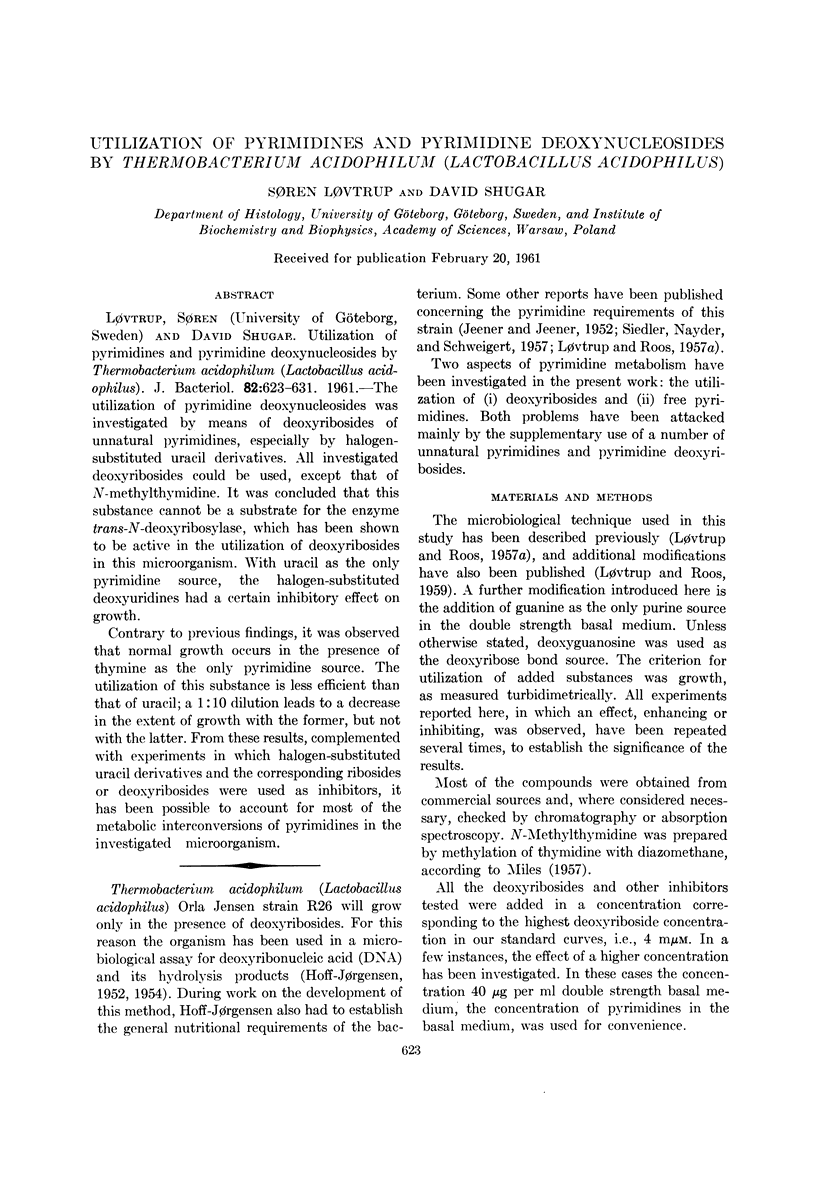
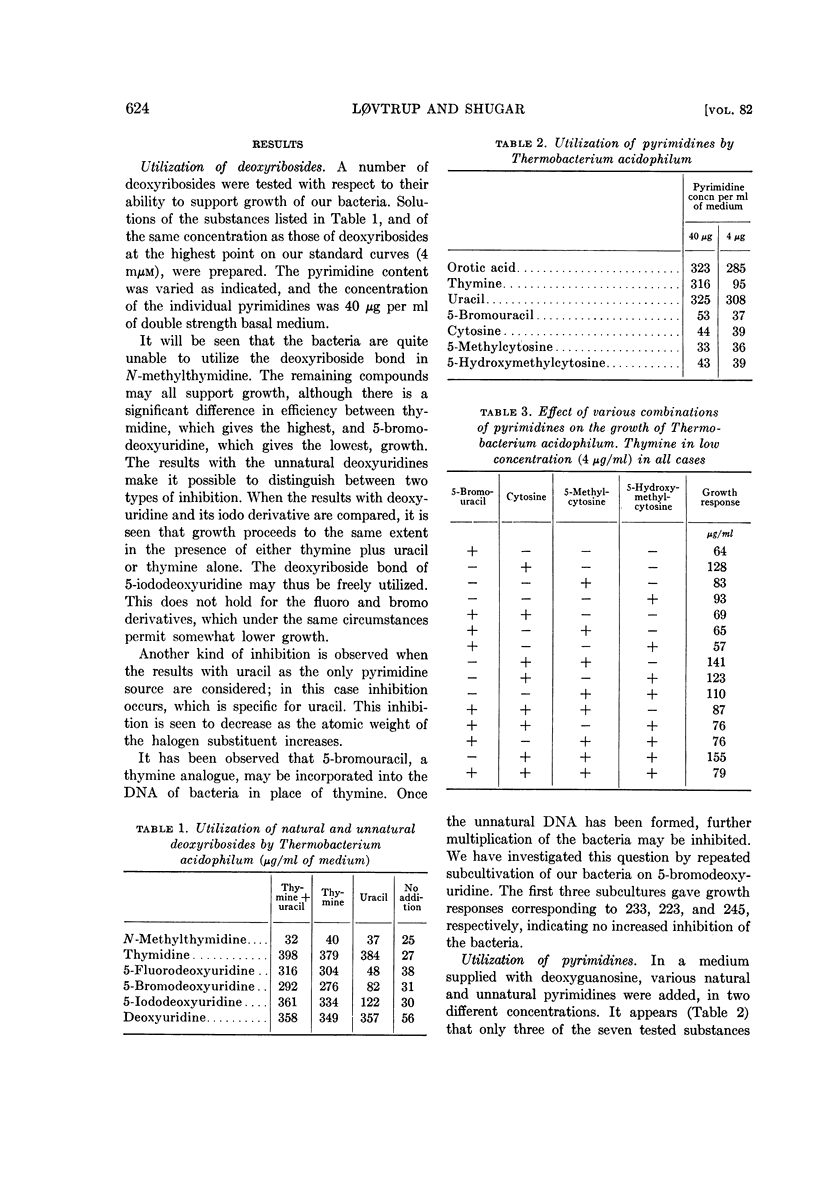
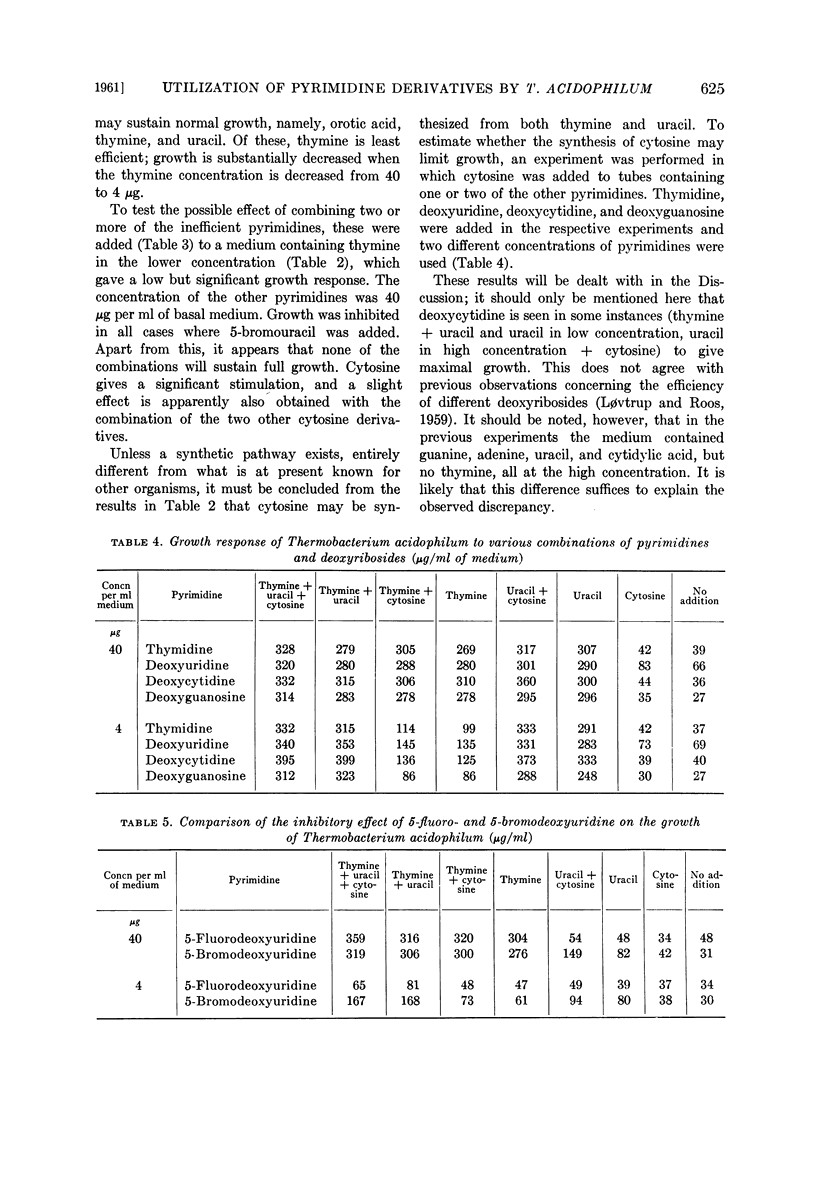
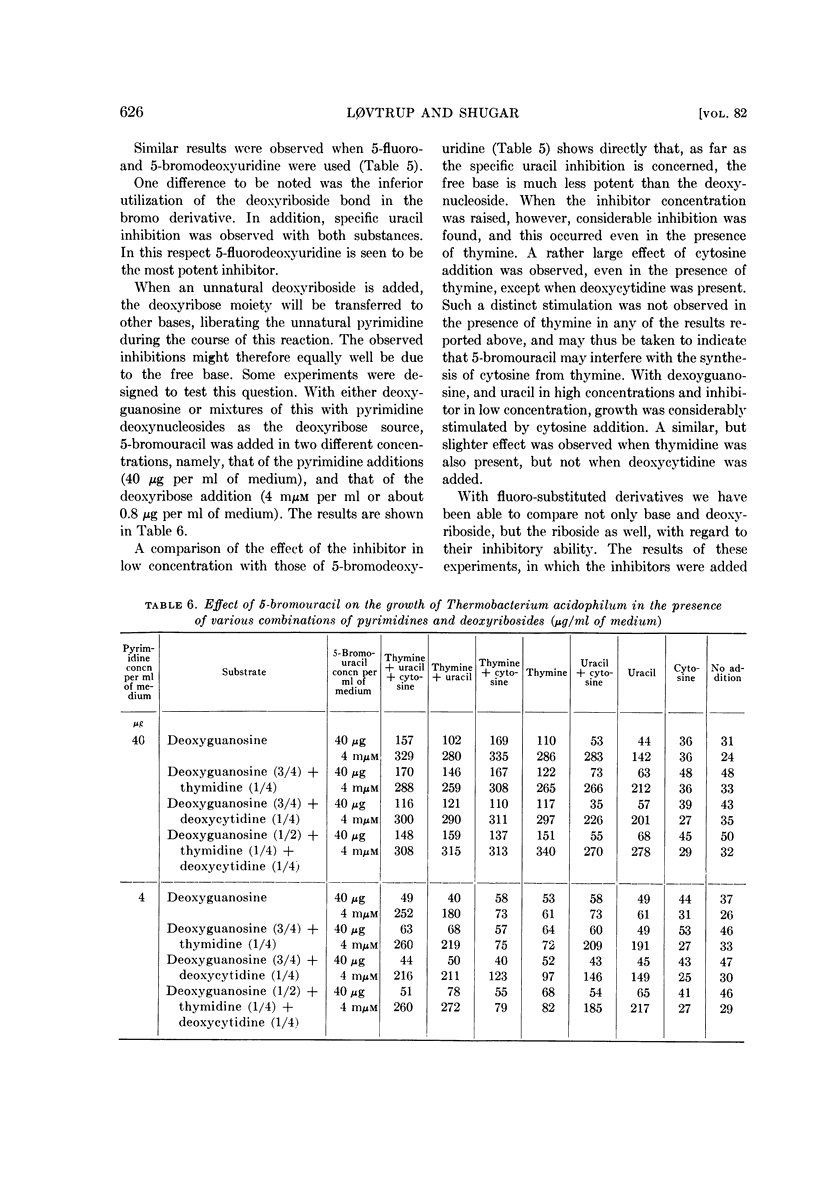
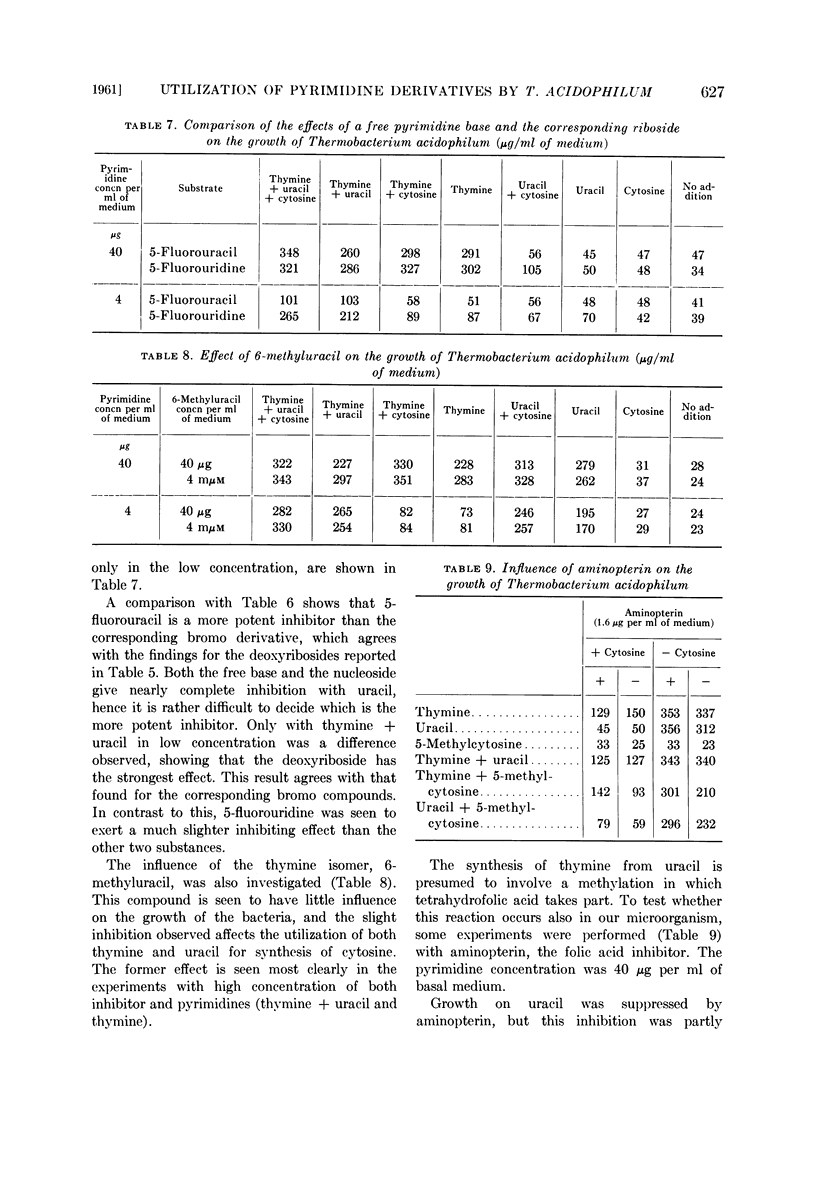
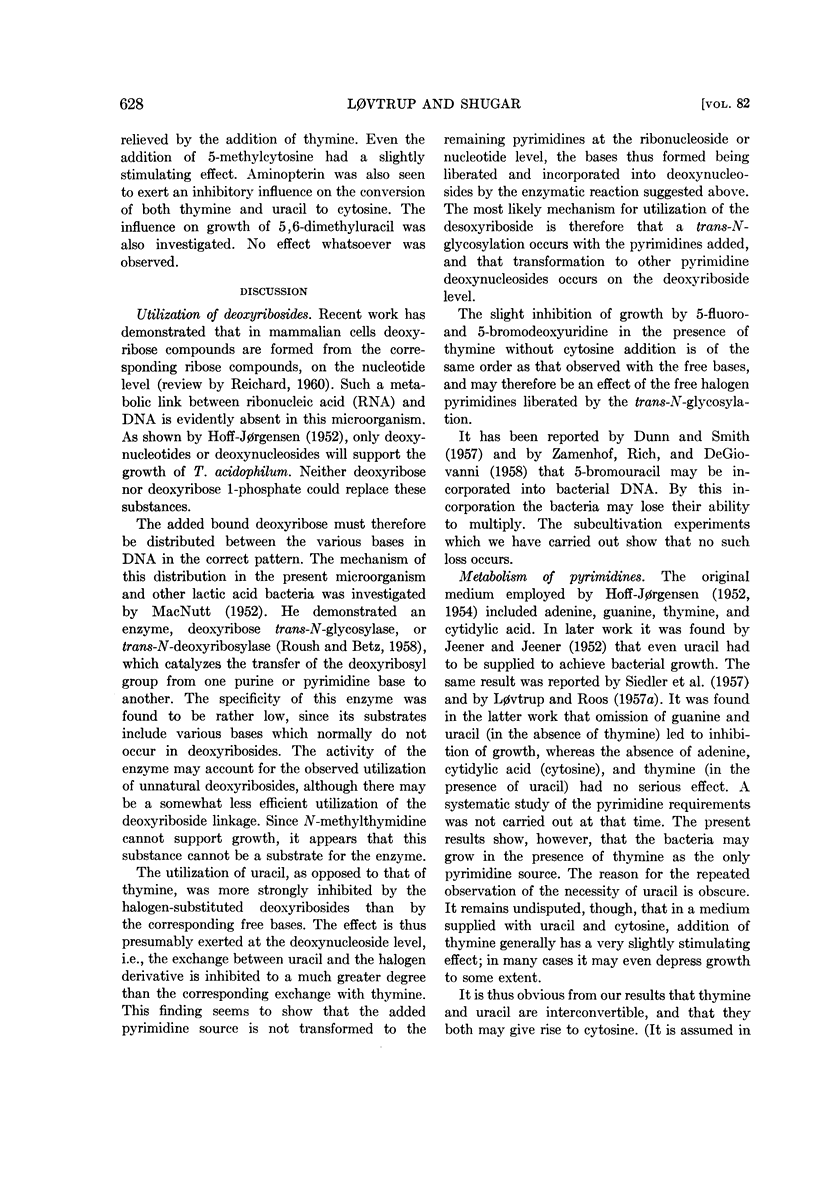
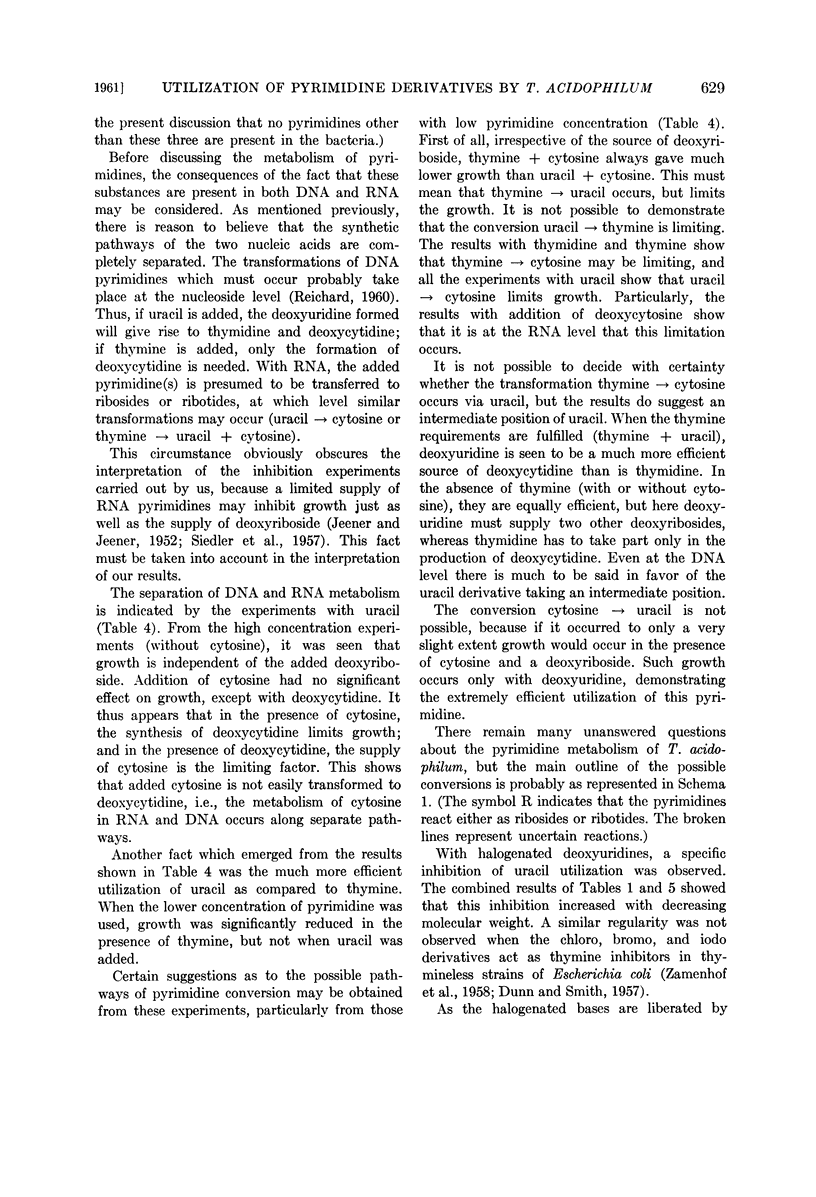
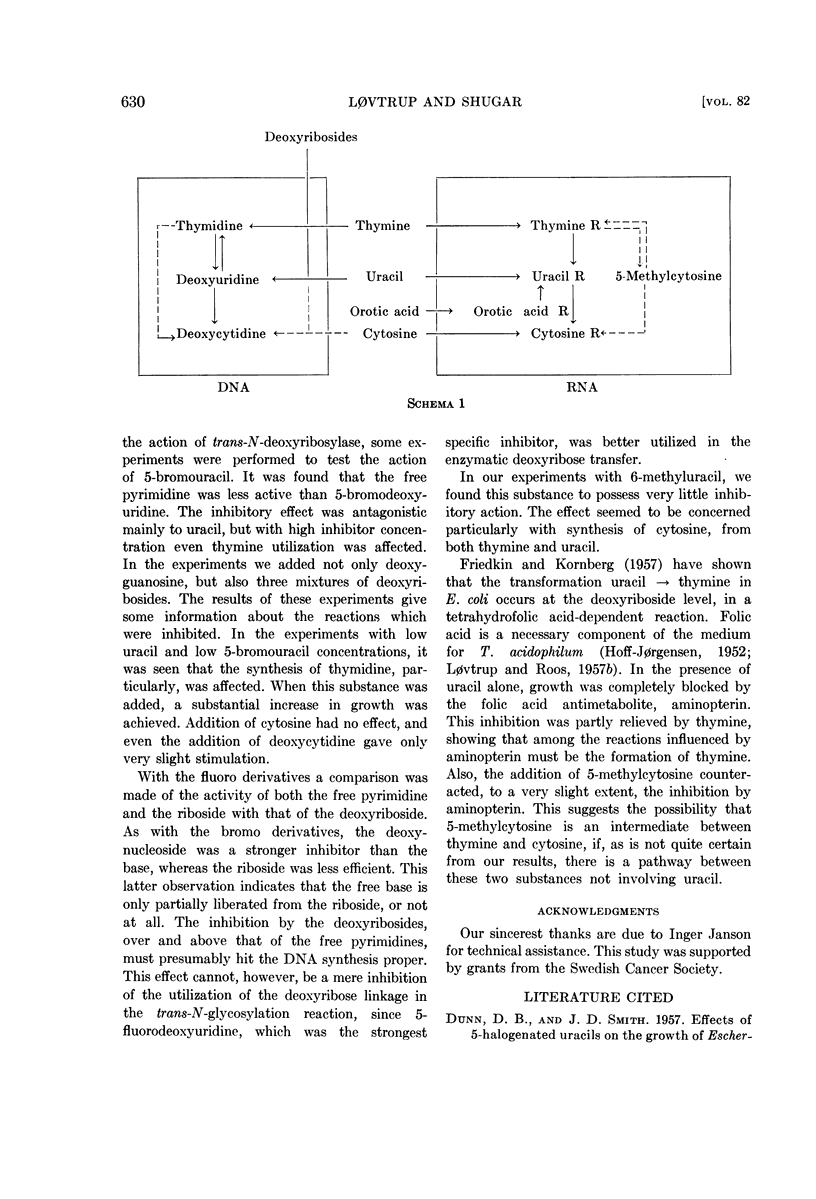
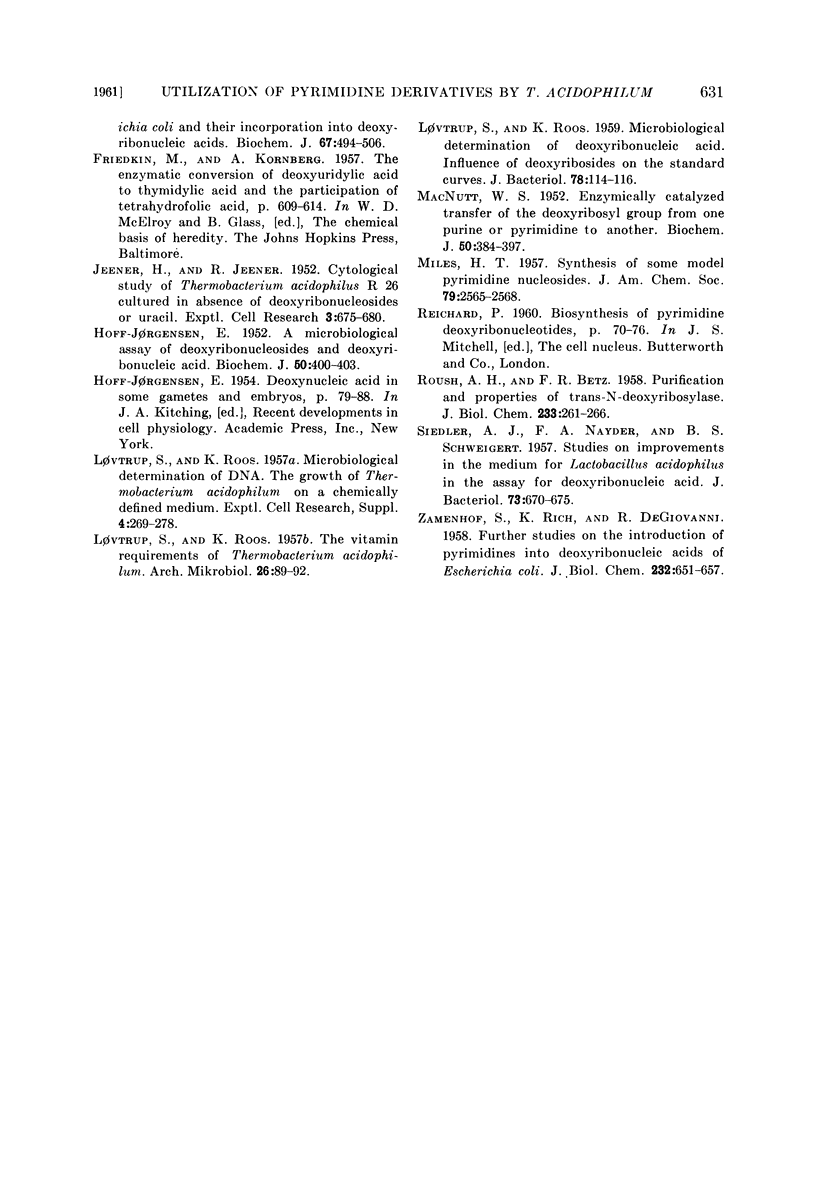
Selected References
These references are in PubMed. This may not be the complete list of references from this article.
- HOFF-JØRGENSEN E. A microbiological assay of deoxyribonucleosides and deoxyribonucleic acid. Biochem J. 1952 Jan;50(3):400–403. doi: 10.1042/bj0500400. [DOI] [PMC free article] [PubMed] [Google Scholar]
- LOVTRUP S., ROOS K. Microbiological determination of deoxyribonucleic acid; influence of deoxyribosides on the standard curves. J Bacteriol. 1959 Jul;78(1):114–116. doi: 10.1128/jb.78.1.114-116.1959. [DOI] [PMC free article] [PubMed] [Google Scholar]
- LOVTRUP S., ROOS K. The vitamin requirements of Thermobacterium acidophilum. Arch Mikrobiol. 1957;26(1):89–92. doi: 10.1007/BF00424854. [DOI] [PubMed] [Google Scholar]
- MACNUTT W. S. The enzymically catalysed transfer of the deoxyribosyl group from one purine or pyrimidine to another. Biochem J. 1952 Jan;50(3):384–397. doi: 10.1042/bj0500384. [DOI] [PMC free article] [PubMed] [Google Scholar]
- ROUSH A. H., BETZ R. F. Purification and properties of trans-N-deoxyribosylase. J Biol Chem. 1958 Aug;233(2):261–266. [PubMed] [Google Scholar]
- SIEDLER A. J., NAYDER F. A., SCHWEIGERT B. S. Studies on improvements in the medium for Lactobacillus acidophilus in the assay for deoxyribonucleic acid. J Bacteriol. 1957 May;73(5):670–675. doi: 10.1128/jb.73.5.670-675.1957. [DOI] [PMC free article] [PubMed] [Google Scholar]
- ZAMENHOF S., FICH K., DE GIOVANNI R. Further studies on the introduction of pyrimidines into deoxyribonucleic acids of Escherichia coli. J Biol Chem. 1958 Jun;232(2):651–657. [PubMed] [Google Scholar]


